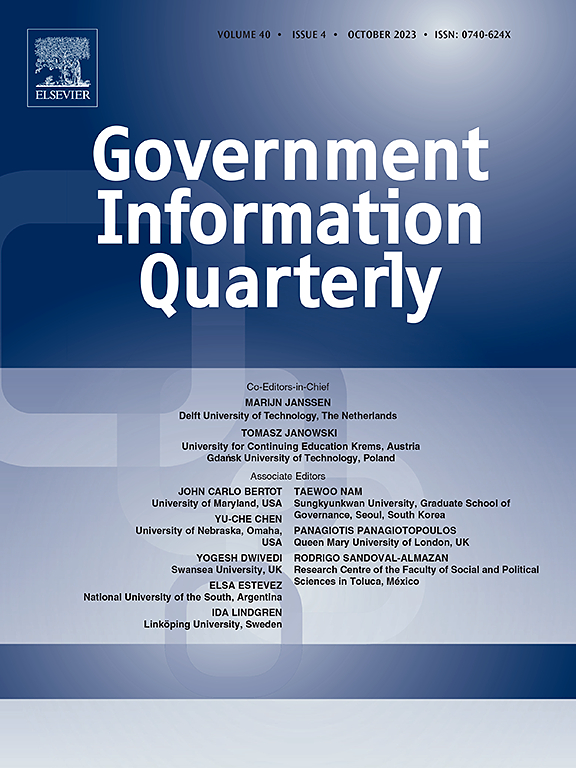公共部门敏捷政府的探索:宏观、中观和微观层面分析的系统文献综述
IF 10
1区 管理学
Q1 INFORMATION SCIENCE & LIBRARY SCIENCE
引用次数: 0
摘要
敏捷起源于私营部门的软件开发,现在已经渗透到公共部门,不仅在项目管理方面,而且在组织管理和协作治理方面都促进了创新改革。尽管敏捷被广泛采用,但是对于敏捷实践的复杂性,特别是与传统的基于瀑布的方法的潜在冲突和相互作用的深入研究仍然很少。采用系统评价和元分析的首选报告项目(PRISMA)方法,本系统评价旨在解决关于敏捷政府的概念、实施和影响的三个基本研究问题。为了加深理论认识和实践应用,我们的研究将敏捷分为三个不同的层次:微观(项目管理)、中观(组织管理)和宏观(治理结构)。我们的分析揭示了敏捷实践在这些层次上的实质性变化,反映了一种旨在与现有官僚系统协调一致的深思熟虑的策略。本研究通过提供政策启示和描绘未来研究努力的途径来结束。本文章由计算机程序翻译,如有差异,请以英文原文为准。
An exploration of agile government in the public sector: A systematic literature review at macro, meso, and micro levels of analysis
Originating from private sector software development, agile has permeated the public sector, fostering innovative reforms not just in project management but also in organizational management and collaborative governance. Despite its widespread adoption, there exists a paucity of research delving into the intricacies of agile practices, particularly for the potential conflicts and interactions with the traditional waterfall-based approaches. Employing the Preferred Reporting Items for Systematic reviews and Meta-Analyses (PRISMA) method, this systematic review aims to address three fundamental research questions concerning the conceptualization, implementation, and impacts of agile government. To deepen theoretical insight and practical application, our study classifies agile into three distinct levels: Micro (project management), Meso (organizational management), and Macro (governance structure). Our analysis uncovers substantial variations in agile practices across these levels, reflecting a deliberate strategy aimed at harmonizing with existing bureaucratic systems. This study concludes by offering policy implications and delineating avenues for future research endeavors.
求助全文
通过发布文献求助,成功后即可免费获取论文全文。
去求助
来源期刊

Government Information Quarterly
INFORMATION SCIENCE & LIBRARY SCIENCE-
CiteScore
15.70
自引率
16.70%
发文量
106
期刊介绍:
Government Information Quarterly (GIQ) delves into the convergence of policy, information technology, government, and the public. It explores the impact of policies on government information flows, the role of technology in innovative government services, and the dynamic between citizens and governing bodies in the digital age. GIQ serves as a premier journal, disseminating high-quality research and insights that bridge the realms of policy, information technology, government, and public engagement.
 求助内容:
求助内容: 应助结果提醒方式:
应助结果提醒方式:


